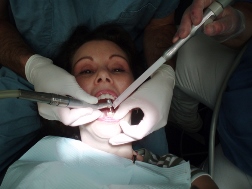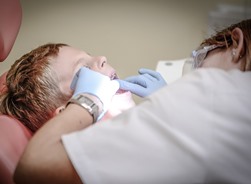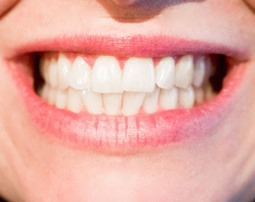How to Find the Right Dental Hygienist Training Program near Great Falls Montana
 Picking the right dental hygienist college near Great Falls MT is an important first step toward starting your new career in dentistry. But prior to making your selection, you must analyze and compare your school options. There is far more to performing your due diligence than selecting the college with the least expensive tuition or enrolling in the program that is closest to your home. There are other important factors to consider also, such as the college’s reputation and accreditation. Dental hygienists usually earn an Associate Degree, as compared to a certificate usually earned by assistants, and can take anywhere from 2 to 3 years to accomplish. Naturally with the longer training of a hygienist comes more cost. We will explore all of these factors and supplemental questions that you need to be asking the dental hygienist programs you are analyzing later in this article. But first, let’s review the duties of dental hygienists and the training programs available.
Picking the right dental hygienist college near Great Falls MT is an important first step toward starting your new career in dentistry. But prior to making your selection, you must analyze and compare your school options. There is far more to performing your due diligence than selecting the college with the least expensive tuition or enrolling in the program that is closest to your home. There are other important factors to consider also, such as the college’s reputation and accreditation. Dental hygienists usually earn an Associate Degree, as compared to a certificate usually earned by assistants, and can take anywhere from 2 to 3 years to accomplish. Naturally with the longer training of a hygienist comes more cost. We will explore all of these factors and supplemental questions that you need to be asking the dental hygienist programs you are analyzing later in this article. But first, let’s review the duties of dental hygienists and the training programs available.
The Role of Dental Hygienists
 When contrasting the job of a dental assistant to that of a hygienist, the biggest difference is probably that the hygienist works more on their own. Dental assistants work with and assists the Great Falls MT practice and the dentists. Hygienists, while also supporting the practice, deal with the patients more on a one-to-one basis. They are frequently the initial person a patient interacts with when called from the waiting room. They examine every patient’s teeth and gums and present their findings to the dentists. They may also carry out basic procedures. Based on state law, a hygienist’s responsibilities can include:
When contrasting the job of a dental assistant to that of a hygienist, the biggest difference is probably that the hygienist works more on their own. Dental assistants work with and assists the Great Falls MT practice and the dentists. Hygienists, while also supporting the practice, deal with the patients more on a one-to-one basis. They are frequently the initial person a patient interacts with when called from the waiting room. They examine every patient’s teeth and gums and present their findings to the dentists. They may also carry out basic procedures. Based on state law, a hygienist’s responsibilities can include:
- Removing tartar, stains and plaque
- Administering fluoride treatments
- Polishing teeth and applying sealants
- Educating patients about oral care
- Taking X-rays and developing film
- Removing sutures and applying fillings
In order to be licensed in almost all states, dental hygienists must graduate from a Commission on Dental Accreditation (CDA) accredited dental hygiene program. They also must pass the National Board Dental Hygiene Exam as well as any state licensure exams. Once they have completed these requirements they are considered fully licensed and can add the “RDH” designation to their names, signifying Registered Dental Hygienist.
Dental Hygienist Education Options
Due to the additional responsibility as compared to an assistant, dental hygienists working in Great Falls MT dental practices are normally required to have an Associate Degree in dental hygiene rather than a certificate. These programs can require anywhere from two to as long as three years to finish and must be accredited by the CDA in almost every state. They are offered in trade and technical schools as well as community colleges. And in addition to classroom studies learning the fundamentals of dental hygiene, there will be a practical component to the training as well| A number of programs also sponsor internships with local dentists or dental practices.
Online Dental Hygienist Classes
 Selecting an online dental hygienist program might be a viable option for receiving your training. Just keep in mind that the classes will not be 100% online, since there will be a practical portion to your training. But the remainder of your classes will be provided via your desktop computer in the convenience of your Great Falls MT home or anywhere else on your laptop or tablet. For those continuing to work while attending school, online dental classes make education a lot more obtainable. Many may even offer lower tuition fees than their traditional competitors. And added expenses for items like commuting, books and school supplies may be reduced as well. The practical training can usually be performed at an area dental office or in an on-campus lab. With both the online and clinical training, everything required to obtain the proper education is provided. If you have the discipline for this style of learning, you may find that attending an dental hygienist online college is the best choice for you.
Selecting an online dental hygienist program might be a viable option for receiving your training. Just keep in mind that the classes will not be 100% online, since there will be a practical portion to your training. But the remainder of your classes will be provided via your desktop computer in the convenience of your Great Falls MT home or anywhere else on your laptop or tablet. For those continuing to work while attending school, online dental classes make education a lot more obtainable. Many may even offer lower tuition fees than their traditional competitors. And added expenses for items like commuting, books and school supplies may be reduced as well. The practical training can usually be performed at an area dental office or in an on-campus lab. With both the online and clinical training, everything required to obtain the proper education is provided. If you have the discipline for this style of learning, you may find that attending an dental hygienist online college is the best choice for you.
Questions to Cover With Dental Hygienist Programs
 Now that you have decided to become a dental hygienist in Great Falls MT, you can start the process of comparing programs and schools. As we discussed at the start of this article, a number of students start by looking at the cost and the location of the schools. Perhaps they look for some online alternatives also. Although these may be significant initial points to consider, there are several additional questions that you should address to the programs you are comparing in order to make an informed decision. Toward that end, we have provided a list of questions to assist you with your evaluation and ultimate selection of the best dental hygienist school for you.
Now that you have decided to become a dental hygienist in Great Falls MT, you can start the process of comparing programs and schools. As we discussed at the start of this article, a number of students start by looking at the cost and the location of the schools. Perhaps they look for some online alternatives also. Although these may be significant initial points to consider, there are several additional questions that you should address to the programs you are comparing in order to make an informed decision. Toward that end, we have provided a list of questions to assist you with your evaluation and ultimate selection of the best dental hygienist school for you.
Is the Dental Program Accredited? There are many valid reasons why you should only pick an accredited dental hygienist school. If you are planning to become certified or licensed, then accreditation is a requirement in virtually all states. To qualify to take the National Board Dental Hygiene Exam, your dental program must be accredited by the Commission on Dental Accreditation (CDA). Accreditation also helps establish that the training you get is of the highest quality and comprehensive. Great Falls MT employers frequently desire or require that job applicants are graduates of accredited colleges. And last, if you are requesting a student loan or financial aid, often they are not provided for non-accredited programs.
Is Adequate Practical Training Included? Practical or clinical training is an essential part of every dental training program. This applies for the online school options also. A number of dental hygienist schools have partnerships with local dental offices and clinics that furnish clinical training for their students. It’s not only important that the school you select provides sufficient clinical hours but also provides them in the kind of practice that you ultimately want to work in. As an example, if you are interested in a career in pediatric dentistry, verify that the college you choose offers clinical rotation in a local Great Falls MT dental office that focuses on dental services for children.
Is There an Internship Program? Ask if the dental colleges you are evaluating sponsor internship programs. Internships are probably the most effective way to obtain hands-on, clinical experience in a professional dental practice. They make it easier for students to transition from the theoretical to the practical. They can also help students develop professional relationships in the Great Falls MT dentistry community. And they are attractive on resumes also.
Is Job Placement Help Provided? Many students that have graduated from dental hygienist colleges require assistance obtaining their first job. Find out if the colleges you are considering have job placement programs, and what their job placement rates are. Schools with higher job placement rates are likely to have good reputations within the Great Falls MT dental profession as well as extensive networks of contacts where they can position their students for employment or internships.
Are Classrooms Small? Check with the programs you are looking at how big typically their classrooms are. The smaller classes generally provide a more personal setting for learning where students have increased access to the instructors. Conversely, large classes often are impersonal and offer little individualized instruction. If feasible, ask if you can monitor a couple of classes at the Great Falls MT dental hygienist school that you are most interested in so that you can witness first hand the degree of interaction between students and instructors before enrolling.
What is the Total Expense of the Program? Dental hygiene programs can differ in cost depending on the duration of the program and the amount of practical training provided. Other variables, for instance the reputations of the colleges and whether they are private or public also have an impact. But along with the tuition there are other significant costs which can add up. They can include costs for such things as textbooks and commuting as well as school equipment, materials and supplies. So when examining the cost of schools, remember to include all of the costs associated with your education. Most colleges have financial assistance departments, so make sure to find out what is available as far as loans, grants and scholarships in the Great Falls MT area.
Are the Classes Convenient? Before enrolling in a dental hygienist college, you must make sure that the hygienist or assistant program offers classes that fit your schedule. This is especially true if you will be working while acquiring your education and must attend classes near Great Falls MT at nights or on weekends. And even if you select an online program, you will still need to schedule your practical training classes. Also, while making your inquiries, ask what the make-up policy is if you should need to miss any classes because of illness, work or family emergencies.
Attending Dental Hygienist School near Great Falls MT?
Great Falls, Montana
Great Falls is a town in and the county seat of Cascade County, Montana, United States.[4] The 2017 census estimate put the population at 58,638.[5] The population was 58,505 at the 2010 census. It is the principal city of the Great Falls, Montana Metropolitan Statistical Area, which encompasses all of Cascade County and has a population of 82,278.[6] Great Falls was the largest city in Montana from 1950 to 1970, when Billings surpassed it. Great Falls remained the second largest city in Montana until 2000, when it was passed by Missoula.[7] Since then Great Falls has been the third largest city in the state.[8]
Great Falls takes its name from the series of five waterfalls in close proximity along the upper Missouri River basin that the Lewis and Clark Expedition had to portage around over a ten-mile stretch; the effort required 31 days of arduous labor during the westward leg of their 1805–06 exploration of the Louisiana Purchase and to the Pacific Northwest Coast of the Oregon Country. Each falls sports a hydroelectric dam today, hence Great Falls is nicknamed "the Electric City". Currently there are two undeveloped parts of their portage route; these are included within the Great Falls Portage, a National Historic Landmark.
The city is home to the C. M. Russell Museum Complex, the University of Great Falls, Great Falls College Montana State University, Giant Springs, the Roe River (claimed to be the world's shortest river), the Montana School for the Deaf and the Blind, the Great Falls Voyagers minor league baseball (formerly known as the Great Falls White Sox, Dodgers, and Giants) team, and Malmstrom Air Force Base. The local newspaper is the Great Falls Tribune. A Coldwell Banker Home Price Comparison Index listed Great Falls as the most affordable area of 348 markets in the US, Canada, and Puerto Rico.
The first human beings to live in the Great Falls area were Paleo-Indians who migrated into the region between 9,500 BCE and 8,270 BCE.[9][10] The earliest inhabitants of North America entered Montana east of the Continental Divide between the mountains and the Laurentide ice sheet.[11] The area remained only sparsely inhabited, however.[12]Salish Indians would often hunt bison in the region on a seasonal basis, but no permanent settlements existed at or near Great Falls for much of prehistory.[12] Around 1600, Piegan Blackfeet Indians, migrating west, entered the area, pushing the Salish back into the Rocky Mountains and claiming the site now known as Great Falls as their own.[12] The Great Falls location remained the tribal territory of the Blackfeet until long after the United States claimed the region in 1803.[13][14]
Find the Right Dental Hygienist School near Great Falls MT
Enrolling in the right dental hygienist program is crucial if you want to take the National Board Dental Hygiene examination or, if required in your state, become licensed. As we have covered, there are a number of options offered to obtain your training and it takes a fairly short period of time to become a dental hygienist. You can obtain your formal education through dental programs at junior colleges, trade schools, vocational schools and technical institutes. Graduates of these schools normally earn an Associate Degree. Dental Hygienists typically require roughly two years of studies before they enter the job market. When pursuing a degree you can elect to go to classes online or on-campus. Whichever mode of training you elect to pursue, by addressing the questions provided in this article you will be in a better position to make the right selection. And by doing so, you will be ready to commence your journey toward becoming a dental hygienist in Great Falls MT.
More Great Cities in Montana
Business Results 1 - 10 of 2




